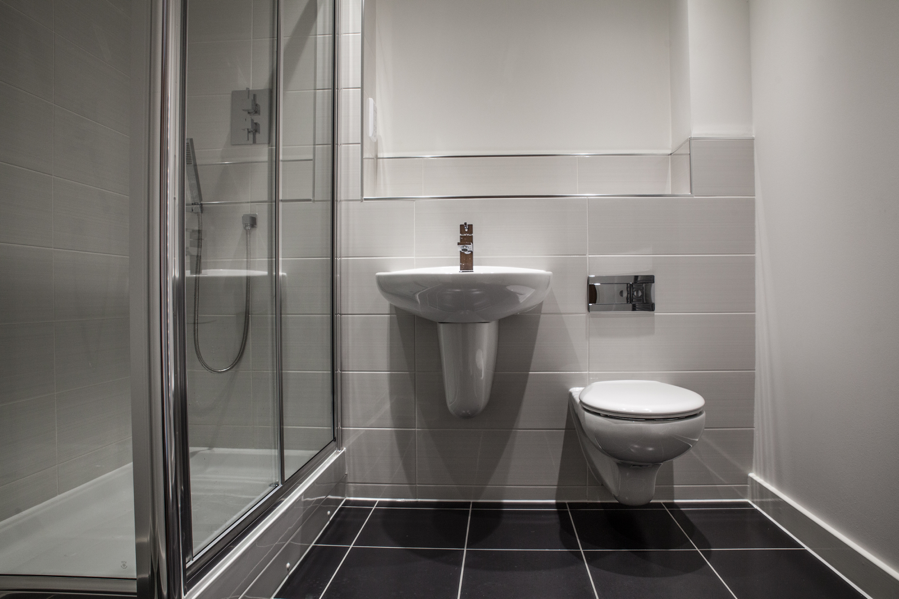If you own a home or are ready to move into a new one, it’s important to consider your environmental footprint. Today’s tax breaks, energy savings and other incentives make it an economically sound decision to make green decisions at home. Eco friendly home features can raise the value of a home because there are many buyers who want to live sustainably and also future-proof their homes against potential new regulations. Of course, the biggest reason to give your home a green makeover is to protect the environment for future generations.
Wondering how to make your home green? It only takes a few small changes to make a big impact:
Switch Your Bulbs
How many homeowners does it take to change an inefficient light bulb? Just one, and it’s completely worth investing in compact fluorescent (CFL) bulbs to replace the energy-draining incandescent variety. Even if you think you’ll miss the warm glow of the inefficient bulbs, many of today’s CFL light bulbs can mimic that softer appearance. Even better — these types of lights prevent hundreds of pounds of greenhouse gas emissions over time. There are many types of CFLs out there, and you can compare their energy savings with the U.S. Department of Energy guide.

HVAC systems have become more efficient over time, but they still use a good deal of energy, which is costly to you and the environment. If you’re looking to buy new HVAC equipment, look for a bright yellow EnergyGuide label that shows exactly how much energy the unit is expected to use over time. You can make improvements at the thermostat as well — modern smart thermostats allow users to program heating and cooling times to match their work schedules. Many of these products even allow you to adjust the temperature remotely with a mobile app. It’s never been easier to limit your fossil fuel usage.
Seal Your Windows
In the winter, you’re likely to either love or hate your windows. You will love them if they are the energy efficient variety, which provide substantial insulation from the bitter cold outdoors. You will hate them if they are old and drafty, with a thin barrier between you and the elements. If your windows aren’t energy efficient, you can either replace them or make adjustments to reduce your energy usage. If you’re looking for a quick fix, buy some heavy-duty plastic window coverings to stop heat from escaping in the winter and entering the home in the summer. Storm windows provide an extra layer of protection from extreme temperatures and add efficiency to the home. Lastly, use caulking to close off any gaps around the window or frame.
Get Low Flow Toilets

In 1995, the National Energy Policy Act was enacted in the U.S., which mandated that all new toilets sold must use no more than 1.6 gallons of water per flush. This drastically cut down on home water usage, as new low flow toilets used less than half the water of the previous models. In their first few years of availability, low flow toilets had a reduced flush force, and people were slow to adopt the new units as a result. Over time, low flow toilets have become cheaper and more powerful, so replacing high flow toilets is a more affordable and attractive option. The water and cost savings are also reasons to switch. Low flow toilets can save a family of four up to 22,000 gallons of water and about $100 dollars per year on their water bill.
Wash with Less
The appliances in a utility room are one of the largest drains on an energy bill and the environment. Not all washers and dryers are created equal, so look for the Energy Star label on appliances if you’re buying new ones. For washers, these types use about 25% less energy and 45% less water than standard options. Be sure to use cold water as frequently as possible, because heating the water uses a majority of the energy when washing clothes. As for dryers, switching to hang drying whenever possible is your best bet. You will reduce carbon emissions and your clothes will last longer. If you rely on a dryer, use a low heat setting on Energy Star units — they use about 20% less energy than regular products.
Get Renewable Energy
You don’t have to install a windmill on top of your home to break free from unsustainable energy resources. Xcel Energy’s Windsource program gives homeowners the choice to receive their energy from renewable resources, in exchange for a slightly higher electricity bill. Customers choose how much of their energy (in 100 KWh blocks) they want to get from the Windsource program. This renewable energy program is more affordable than you might think. For the average home, it costs just $6.80 extra per month to cover 100% of its electricity usage. When you consider the price we all pay by damaging the environment, that’s a bargain! Going green at home is a responsible decision that comes with plenty of benefits. If you’re in the market to sell your home, it’s worth looking into sustainable products that can add value to potential buyers. Even if you don’t decide to sell anytime soon, you will save money and prepare yourself for a sale down the road. Are you looking to purchase a green home in 2017? Don’t be afraid to ask homeowners questions about their energy savings and utility bills. When it’s time to move, you will feel better about your decision. Check out our blog post “How to Simplify Your Life When Moving” to make the process even easier.
